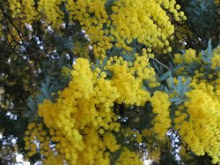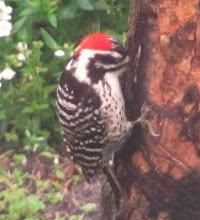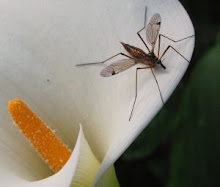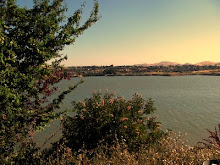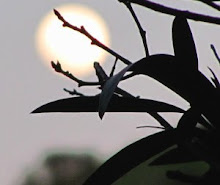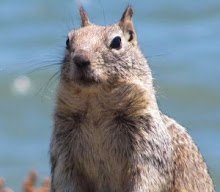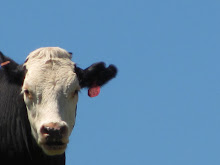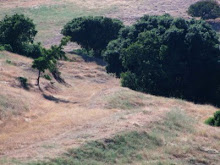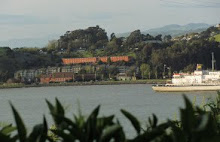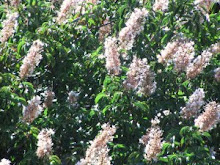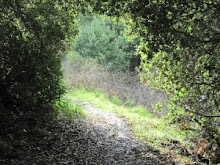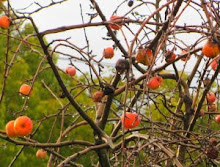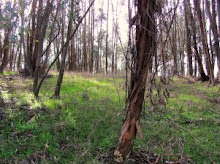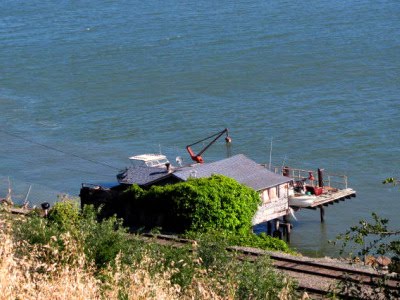GENUS Oxalis
SPECIES Oxalis pes caprae (ox-AL-is pez ca-PRAE)
COMMON NAMES
Bermuda buttercup; African woodsorrel; Sourgrass (United States); Soursob (Australia)
Always on the hunt for foreign invaders, American xenophobics may very well extend their hostility to the vegetal realm. Although I usually lack sympathy with the misguided "America for Americans first" folks, in the case of the lovely but invasive oxalis, I may feel differently now that I have my own rather large garden covered in the weed each spring.
Schoolkids munch on it; gardeners curse it; fields, pasturelands, coastal woodlands, and river and stream banks abound with it. Sourgrass to Americans, and Soursob to Australians, oxalis. Pull it year after year, you will rarely be done with the thing. It's not especially harmful and usually dies back in dry weather, but in the time when your cultivated plantings are struggling for their start and competing for space, air and sunlight, oxalis is an interference. It's taking our jobs away!!!
It carries around some mythology too as it vagabonds its way through the Bay Area and beyond. It looks like a clover or shamrock, and although it does contain a potentially deadly poison, oxalic acid, you’d have to ingest a LOT before you keeled over. Before that happened, you would probably vomit most of it, just like my cat Perdita who enjoys a few stems and greens now and then.
Its oxalic content is shared with many of our favorite vegetables, notably spinach, chives, parsley, beet greens and chard; there’s a particularly high content in rhubarb leaves but who eats rhubarb leaves, let alone rhubarb itself? For me, I’ve long been hopeful in response to the old quandary, “Reckon the rain’ll wreck the rhubarb?”
My cousin David, an avid gardener in Berkeley, likes to intimately commune in his Berkeley backyard. Following a day of blissful weeding in the nude, he ended up with a terrible rash all over his body. Some oxalic acid, he thinks, migrated into his bloodstream from an open wound. I've pulled a lot of it this spring but mostly only have a slight irritation on my skin afterwards; as a precaution, I break every hour or so to wash thoroughly with warm water and soap. (I don't like using garden gloves while weeding.) After a good rain storm, oxalis comes out easily, yet you may trust that thousands of bulblets remain underground to return to haunt you next year.
Getting rid of oxalis is a true accomplishment after years of patient pulling and replacing soil. Each bulb can produce over 20 smaller bulblets! The wise ones of garden advice-giving suggest that the only things to really sock it to oxalis are:
1. use herbicides with glyhphosate such as RoundUp;
2. completely sift or replace the soil at least a foot or two down;
3. or, starve the soil of sun for a year or more with plastic sheeting.
All eradication solutions seem extreme to me; if you enjoy your garden--and it is of manageable size--you may very well enjoy getting close to the soil and tugging away at the smaller reappearing stems to augment the nourishing space, aeration and light to your cultivated treasures. It is amazing that there are those who actually search out and buy the bulbs to plant oxalis in their yards as a seasonal ground-cover! (Not in coastal Northern California!)
I often begin sitting on the side of a planted bed, and often find myself spread out parallel to the earth on my hip and elbow to pull the oxalis and liberate my other plants.
Face to face with bulblets
yellow-flowered oxalis
earth calls me to attend
my mortality
My husband joked about getting a goat to chew away at the plant, which was prescient in a way as I learned that the complete Latin name of our particular oxalis is oxalis pes carprae, which means sour goat’s foot. Etymologists think this is a reference to the leaf of the plant which looks slightly cloven-shaped (clover-shaped). Eating large quantities of oxalis may not hurt the goat--known for their cast-iron stomachs--but it can be toxic to sheep. The oxalic acid combines with other chemicals in an organic system to deplete oxygen and form kidney stones, among other nasty things, so it is particularly dangerous to those with certain renal and rheumatoid conditions. Contact with large quantities of oxalic acid can cause burns, nausea, gastroenteritis, vomiting, renal damage, skin irritations, and since it can be absorbed through the skin, and make its way into the eyes and upper respiratory system.
In manufacturing, oxalic acid is used in bleaching and anti-rusting products, in metal cleaners. I wondered about whether you could scrub your grill with oxalis and make it come out sparkling, but because of its dilution with other chemicals in the organic plant, it likely would just turn my both my barbecue pit and my hands green.
Oxalis pes caprae loves a Mediterranean climate so we share its invasive beauty with Italy, Greece, parts of Spain, North Africa and Australia. On Malta, it is the most common weed. Scientists are monitoring its take-over of coastal sand dunes in Humboldt County, a likely competitor to that other famous herb grown in Northern California. One observer documented an explosion of oxalis between 2000 and 2005, after the Bureau of Land Management had removed a large area of grass in an endangered plant area using heavy equipment. Apparently, soils were disturbed and soils contaminated with oxalis bulblets were introduced to flower in every greater numbers in subsequent years.
But, just where does oxalis come from? South Africa, would be your answer, home to many other invasive but beautiful species. It is an area of resilience and defiance, of a native people strong and proud to reclaim its borders over the invasion of other “species,” so it should come as no surprise.
TO RID YOUR GARDEN OF OXALIS
* Repeated and deep pulling of the plant and bulbs
* Mowing it down periodically
* Sifting, digging and replacing the soil in which it grows (up to 1 ½” to 2” down)
* Getting rid of plant refuse in your take away green-waste and not putting any part of the soil that you have replaced in your compost bin or leaving it around in a weed pile.
* Covering an area with stiff cardboard and over that wood-chip mulch.
* Applying a herbicide with glyphosate, such as RoundUp, just before the plant flowers (up to a 95% kill-rate).
* Covering large areas of soil with opaque plastic sheeting for a year or more to starve the soil and the plant of sun.
THE STRANGE AND TRUE STORY OF THE BERMUDA OXALIS SNATCHERS
Moses Brathwaite vs. Nathaniel Weekes
I found a fascinating case in Barbados in 1897 of two women who transported sour grass from one man's mangrove plantation to another man's cane plantation; the owner of the cane plantation was charged with larceny and was defended on some fascinating legal principles. Who would have thought that sour grass was so much in demand that a couple of plantation workers (I don't know when slavery was outlawed in the Caribbean), would want it growing in the fields of another man--or perhaps they were out for revenge, wanting to introduce a pesky weed into another farmer's fields?Mr. Weekes was charged for standing and watching as two women, Lizzie Green and her daughter, Christian, were employed to cut sour grass growing on the mangrove plantation, the property of the complainant. The women were witnessed transporting some of the cut grass into a cane field belonging to the defendant who took no part in the removal of the grass but happened to be standing in the boundary line between the mangrove plantation and the cane plantation.
Attorney for the appellant was Mr. Goodman; for the defendant--charged with stealing sour grass--was Mr. Greaves. Mr. Greaves argued that his client had only witnessed the transport of the sour grass and had not participated, he should be considered innocent of the charge of larceny. Stealing and receiving the sour grass into his own fields came under the application of a law against stealing someone else’s crops. The defender made the point that it was “old law that because a man was present when a felony was committed did not of itself make him an accomplice. . . He must not only be present, but must be a participator in the commission of the offence.” (Report of cases relating to Barbados to be found in the English law . . . printed in Bridgetown, Barbados in 1897, and commissioned into the Harvard Law Library on December 12, 1905, and found at http://books.google.com)














